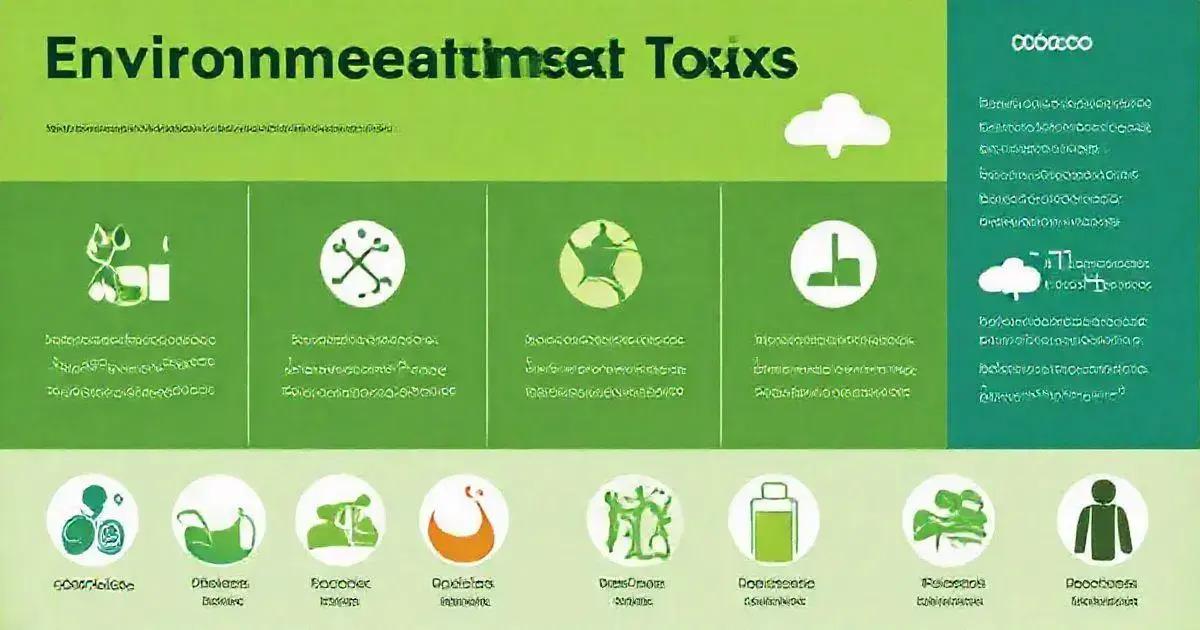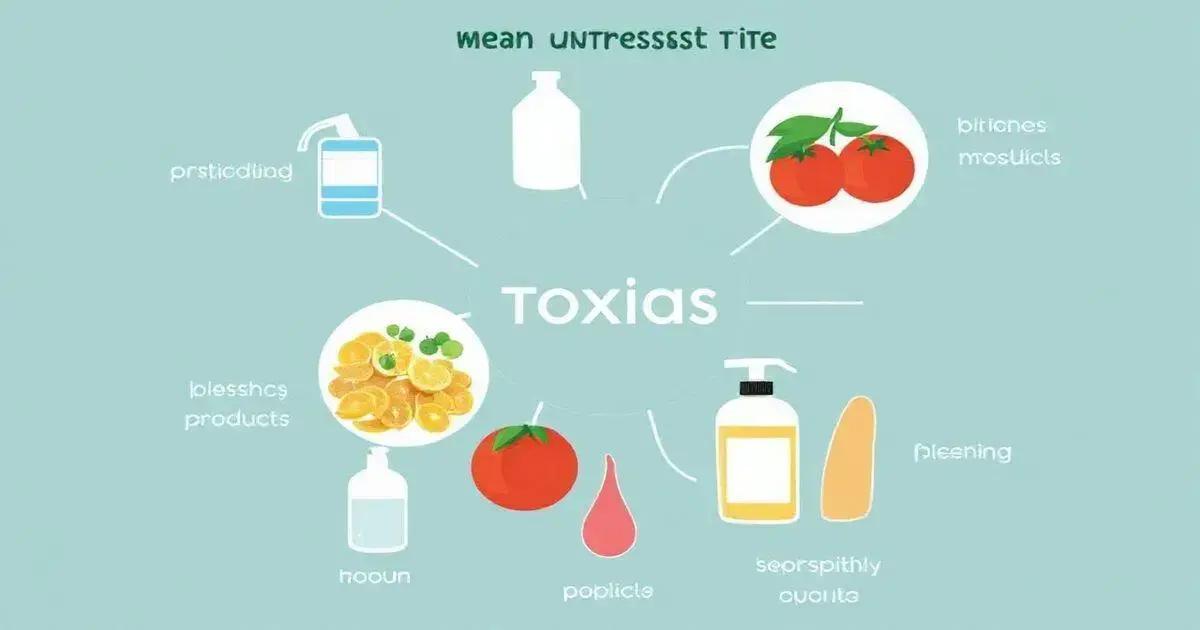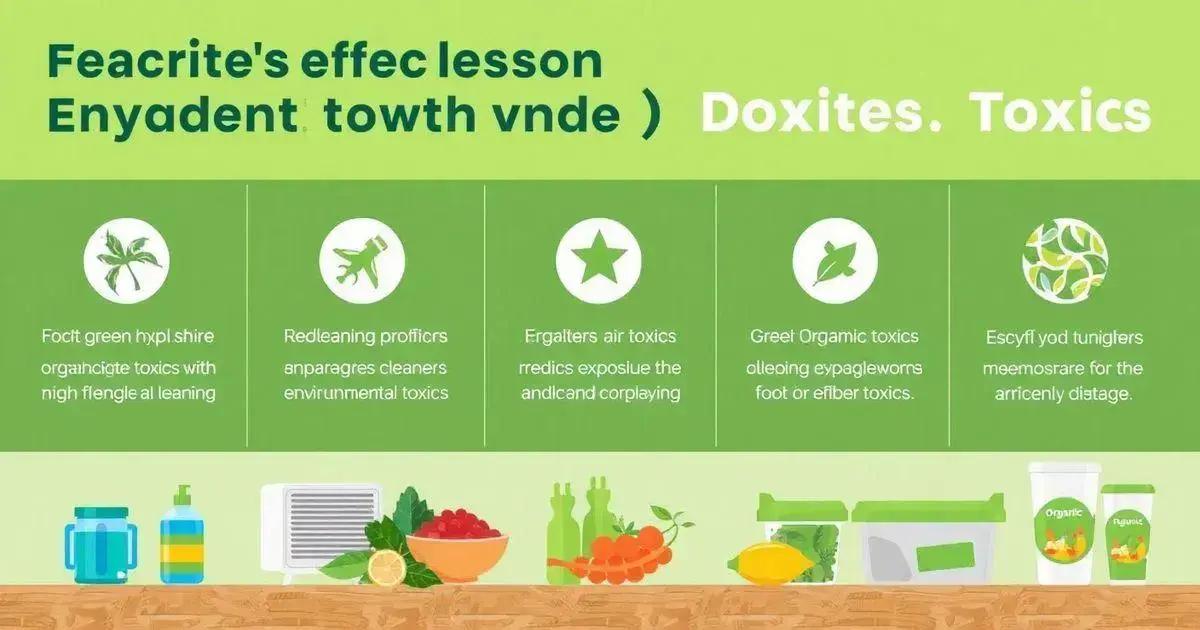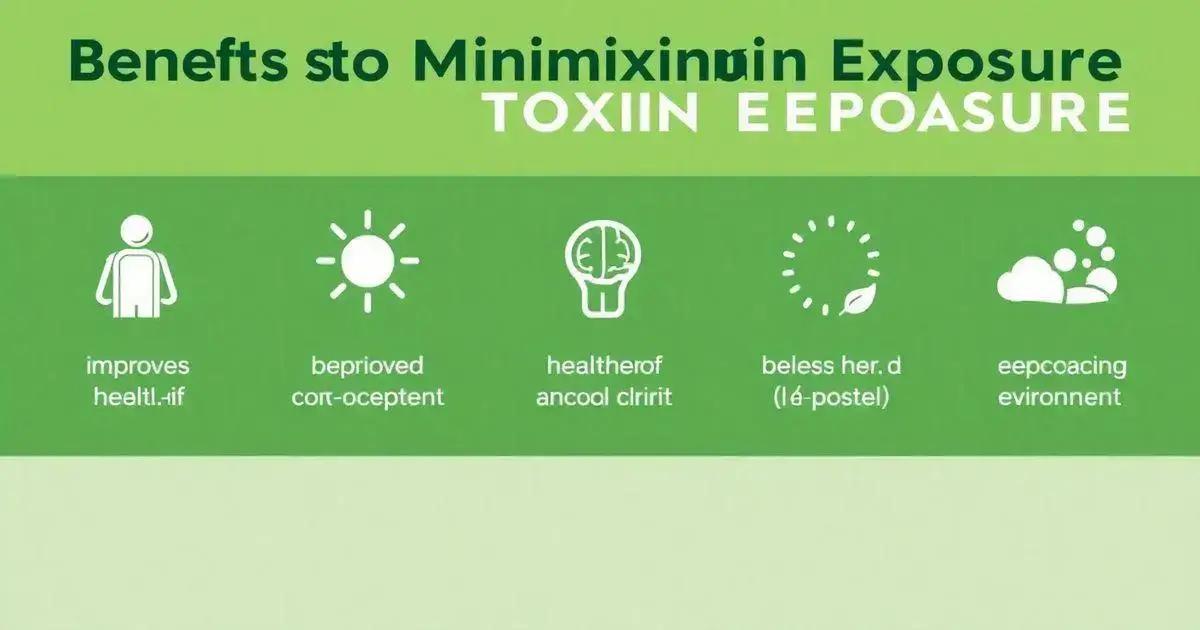To reduce exposure to environmental toxins in daily life, identify common sources such as household products, food, and indoor air pollutants, and implement effective strategies like using natural cleaning supplies, buying organic produce, and improving indoor air quality for better health and overall well-being.
In today’s world, we encounter environmental toxins daily, impacting our health and well-being. These harmful substances can be found in our homes, workplaces, and even in the air we breathe. To lead a healthier life, it’s crucial to understand how to reduce exposure to these toxins. In this article, we’ll explore the nature of environmental toxins, identify common sources, present effective strategies for reducing exposure, and discuss the significant health benefits that come from minimizing toxin contact.
Understanding Environmental Toxins

Understanding Environmental Toxins is crucial for maintaining a healthy lifestyle. These are substances in our environment that can harm human health. They include chemicals found in household products, food, air, and even water.
Types of Environmental Toxins
There are various types of environmental toxins. Some common categories include:
- Heavy metals: Lead, mercury, and cadmium can come from various sources, including old plumbing and contaminated fish.
- Pesticides: Chemicals used in agriculture to kill pests can remain on fruits and vegetables.
- Volatile organic compounds (VOCs): These are emitted as gases from certain solids or liquids, including paints, cleaning supplies, and air fresheners.
- Endocrine disruptors: Chemicals that can interfere with hormonal systems, often found in plastics and personal care products.
Impacts on Health
Exposure to environmental toxins can lead to a variety of health issues. Some immediate effects include headaches, fatigue, and skin irritation. Over time, prolonged exposure can result in more serious conditions, such as:
- Respiratory problems: Pollutants can cause asthma and other lung diseases.
- Cancer: Some chemicals are known carcinogens that can increase cancer risk.
- Reproductive issues: Certain toxins can impact fertility and fetal development.
Importance of Awareness
Being aware of environmental toxins is the first step in reducing exposure. Understanding where these toxins come from and their potential dangers can empower individuals to make healthier choices. By learning about the sources of toxins, we can actively seek alternatives and advocate for safer products in our homes.
Common Sources of Toxins in Daily Life

Everyday life is full of common sources of toxins that can affect our health. Understanding these sources is essential for minimizing exposure to harmful chemicals.
Household Products
Many cleaning agents, air fresheners, and personal care products contain volatile organic compounds (VOCs) and other harmful ingredients. Some popular household items include:
- All-purpose cleaners: These often contain harsh chemicals that can release toxic fumes.
- Air fresheners: Many contain synthetic fragrances that can contribute to indoor air pollution.
- Disinfectants: While necessary for hygiene, some can irritate your lungs and skin.
Food and Drinking Water
Our food can also be a significant source of toxins. Foods grown with pesticides or contaminated with heavy metals can lead to health issues. Pay attention to:
- Pesticides on fruits and vegetables: Washing is good, but buying organic can reduce exposure.
- Fish: Certain fish can accumulate toxic metals like mercury.
- Tap water: It may contain chlorine, lead, and other chemicals.
Indoor Air Quality
The quality of indoor air can often be compromised by pollutants. Don’t overlook:
- Building materials: Products like formaldehyde in plywood and particleboard can release harmful emissions.
- Mold and mildew: These can thrive in damp areas and produce harmful spores.
- Dust and allergens: Keeping a clean home can help reduce these irritants.
Personal Care Products
Items such as cosmetics and personal hygiene products can also contain a range of toxins. Be mindful of:
- Beauty products: Lotions, shampoos, and makeup often include harmful chemicals.
- Fragrance: The term can mask a multitude of unintended harmful substances.
By identifying these common sources of toxins, individuals can better take action to limit their exposure in daily life.
Effective Strategies for Reduction

Reducing exposure to environmental toxins requires effective strategies that anyone can follow. Here are some practical tips to help you live a healthier life.
Choose Safer Household Products
One of the easiest ways to reduce toxins at home is by selecting natural or less harmful products. Consider:
- Green cleaners: They are made from natural ingredients and are less likely to release harmful chemicals.
- DIY cleaning solutions: Use basic ingredients like vinegar and baking soda to clean effectively.
- Fragrance-free products: Opt for items without synthetic fragrances to avoid potential irritants.
Improve Indoor Air Quality
Indoor air can be more polluted than outdoor air. Here are steps to enhance your home’s air quality:
- Ventilation: Always open windows when cleaning to let fresh air in.
- Plants: Include air-purifying plants such as spider plants or peace lilies to naturally cleanse the air.
- Air purifiers: Invest in a good air purifier to filter out toxins and allergens.
Be Mindful of Food Choices
Your diet can play a significant role in your toxin exposure. To make healthier choices:
- Buy organic: Whenever possible, purchase organic produce to avoid pesticide exposure.
- Wash fruits and vegetables: Thoroughly wash produce to remove pesticide residues.
- Filter your water: Use a quality water filter to reduce impurities in your drinking water.
Reduce Plastic Use
Plastics can leach harmful chemicals into your food and drinks. To lower plastic exposure:
- Use glass or stainless steel: Opt for containers made of glass or stainless steel instead of plastic.
- Avoid microwaving plastic: Refrain from heating plastic containers in the microwave as this can release harmful chemicals.
- Be cautious with food packaging: Choose fresh food instead of packaged items whenever possible.
By implementing these effective strategies for reduction, you can actively minimize your exposure to environmental toxins in daily life.
Benefits of Minimizing Toxin Exposure

Minimizing toxin exposure brings numerous benefits for your health and well-being. Here are some of the key advantages that come from reducing harmful substances in your life.
Improved Health
One of the most significant benefits is improved overall health. Reducing exposure to toxins can lead to:
- Stronger immune system: A healthier body can better fight off illnesses and infections.
- Reduced risk of chronic diseases: Lower exposure to environmental toxins can decrease the chances of developing conditions like cancer, diabetes, and cardiovascular diseases.
Enhanced Energy Levels
Many people report feeling more energetic after reducing their toxin exposure. Benefits include:
- Improved metabolic function: Limiting toxins contributes to better digestion and energy production.
- Reduced fatigue: Lower toxin levels can lead to better sleep and overall vitality.
Better Mental Clarity
Reducing environmental toxins can positively affect your mental health as well:
- Improved focus and concentration: Fewer toxins can help clear the mind, enhancing cognitive function.
- Reduced anxiety and stress: A cleaner environment contributes to a more peaceful state of mind.
Healthier Environment for Families
Minimizing toxin exposure benefits not just you but also your loved ones:
- Safer home environment: Using fewer harmful chemicals protects children and pets from exposure.
- Positive role modeling: Demonstrating healthy habits encourages family members to adopt healthier lifestyle choices.
Environmental Benefits
Reducing personal toxin exposure contributes to a larger positive impact on the environment:
- Less pollution: Using fewer chemicals in your home helps reduce the overall chemical load in the environment.
- More sustainable practices: Choosing eco-friendly products supports sustainable manufacturing and practices.
Embracing these benefits of minimizing toxin exposure can greatly enhance your quality of life while promoting a healthier planet.
In summary, reducing exposure to environmental toxins is vital for a healthier life
By understanding the sources of these toxins and implementing effective strategies to minimize them, you can greatly improve your overall health and well-being.
Embracing safer household products, improving indoor air quality, making mindful food choices, and reducing plastic use are key steps in this process.
The benefits are vast, including enhanced energy levels, better mental clarity, and a safer environment for your family. Moreover, minimizing toxin exposure contributes to a healthier planet.
Taking conscious actions today can lead to lasting changes for you and future generations. Prioritize your health by actively reducing toxins in your daily life.
FAQ – Frequently Asked Questions about Reducing Exposure to Environmental Toxins
What are environmental toxins?
Environmental toxins are harmful substances found in our surroundings, including chemicals in air, water, food, and household products that can negatively impact human health.
How can I identify common sources of toxins in my home?
Common sources of toxins include household cleaners, processed foods, indoor air pollutants, and personal care products. It’s important to read labels and choose safer alternatives.
What are effective strategies to reduce exposure to toxins?
Effective strategies include using natural household products, improving indoor air quality with ventilation and plants, choosing organic foods, and reducing plastic use.
What benefits come from minimizing toxin exposure?
Minimizing toxin exposure can lead to improved health, enhanced energy levels, better mental clarity, a safer environment for families, and positive environmental impacts.
How do household products impact toxin levels?
Many household products contain chemicals that can release toxins into the air, impacting indoor air quality and overall health. Opting for green and non-toxic products can help mitigate these risks.
Can reducing toxin exposure affect children and pets?
Yes, minimizing toxin exposure creates a safer home environment, which is particularly beneficial for children and pets who are more vulnerable to harmful chemicals.













